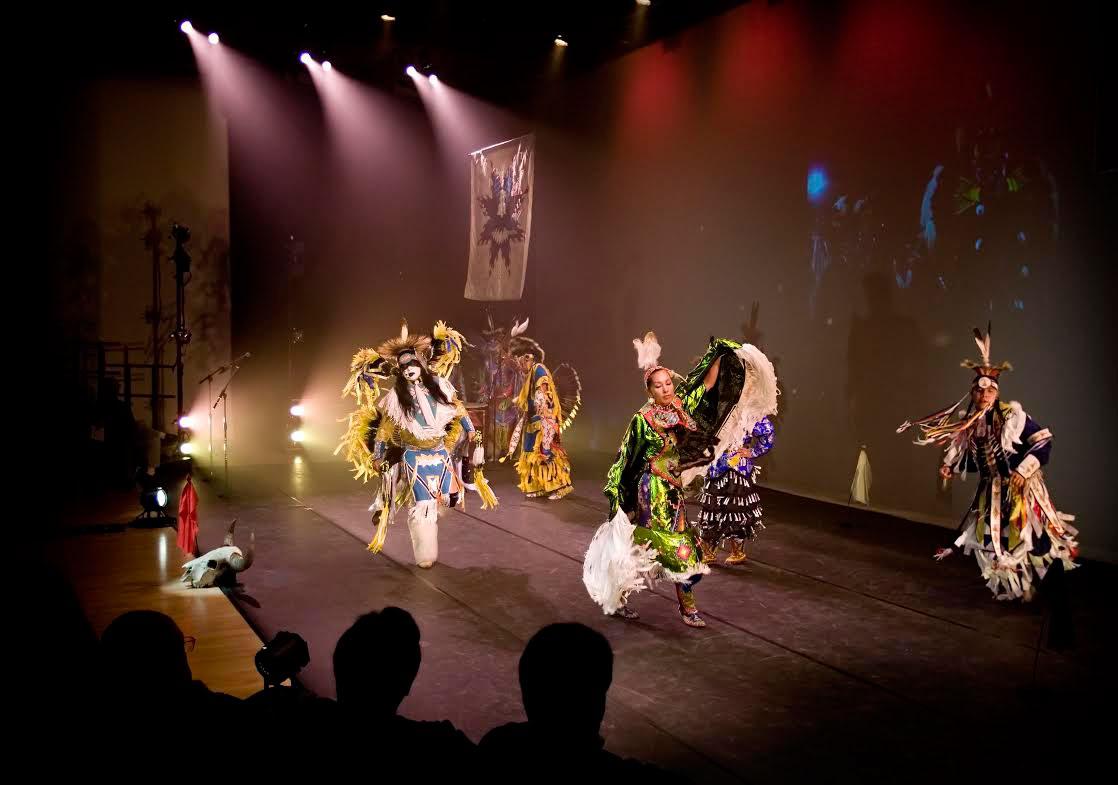The Lakota Sioux Indian Dance Theatre captivated App State students and locals at the Schaefer Center last Wednesday by using song and dance to share cultural stories.
The theatre was founded in 1978 on the Rosebud Reservation in South Dakota, musician Adrian Cross said, and has performed around the world. Through their performances, the group hopes to educate the world about the history and holistic culture of the Lakota Sioux.
“I would hope the people would feel the genuine music and our heartfelt story,” Cross said. “What I really want is for the audience to see how grounded we are and that we’re still continuing.”
The show “Cokata Upo!” is a celebration of the Lakota Sioux’s culture. The dancers move to fast-paced, rhythmic drumming and chanting, and wear bright costumes that reflect the subject of each dance.
“We have been underground for years, but as you can see tonight, we are alive and well,” said Garan Coons, a storyteller and dancer for the Lakota Sioux Indian Dance Theatre.
The show also featured special guest Kevin Locke, a world renowned hoop dancer who worked with the original Lakota Sioux Indian Dance Theatre almost 30 years ago. His hoop dance was one of the last performances of the night and brought the biggest applause from the audience.
Each song and dance emphasized the importance of nature in the Lakota’s rituals, Anna Gaugert, director of marketing for the Schaefer Center, said.
“The Lakota Sioux believe that all things are connected — nature, animals, and humans,” she said. “They express this belief with the symbol of a circle, especially in dance.”
The group showed its appreciation for animals through dances and prayers for the buffalo, songbird, eagle and horse. The dancers wore headdresses and beading to replicate the animals’ appearances and movement.
When introducing the tradition of the eagle, Coons asked the house lights to be raised to pay tribute to veterans in the audience. The group waved the eagle staff, which is their flag, and performed a victory song.
Coons shared the names and stories of the performers at the end of the show. The performers were available to answer questions and take pictures with audience members at a meet and greet in the lobby of the Schaefer Center.
Gaugert said that the university hosts these events to promote an openness and awareness of other cultures to the students.
“We always strive to present artists who are fun and entertaining, but our goal is to go beyond this, by booking artists who broaden and deepen audience’s experiences with the arts, and whose performances will connect to the classroom,” she said. “This performance supports the teaching mission of the university by offering a ‘window on the world’ through the artistry of the Lakota Sioux Indian Dance Theatre.”
By: Aleah Warner, Intern A&E Reporter

